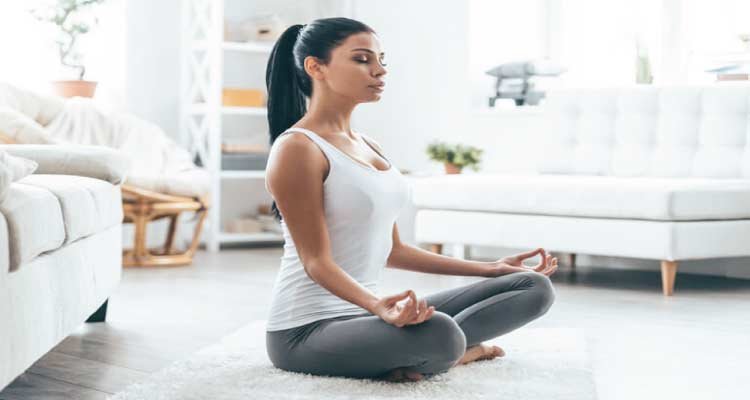My favorite definition of meditation has to do with the precise technique for resting the mind and attaining a state of consciousness that is totally different from the normal waking state.
Note those words underlined, you get to know that once you can understand the techniques of meditation, it will be vet easy to put your mind at rest in the state of consciousness. No matter what situation you tend to find yourself, learning these techniques will do the magic required to relax the mind.
[lwptoc]
Meditation is the best way to start your day, because it will make you more productive. It might sound strange that sitting still and doing nothing for a period of time will make you more productive, but it’s true. Before diving into what to do, it’s worth going over why you should meditate in the first place.
What I tend to achieve is to give you everything you need to start a meditation practice to become more productive.
Here are various techniques On How To Meditate you may want to consider
1. Breath

The basic idea of meditation is very simple; you just need to concentrate on your breath. It is a great start to preparation for easy meditation. Deep breathing in and out is always a good idea. This helps to steady the rhythm of the breath and leads the mind in to a peaceful meditative state.
Also, Paying attention to the breath is a great way to anchor yourself in the present moment. Notice your breath streaming in and out. There’s no need to regulate the breath – just try and let it be natural.
First sit straight on plane surface and focus on breathing in and breathing out. Try counting “one” as you take in the first breath, then “two” as you breathe out. Repeat this to the count of 10, then start again at one.
If it’s your first time, and you are unable to focus on your breath, don’t worry. Just try it again and count your breath to help keep you focused. It’s not so easy that you just close your eyes and meditate right away. Regular practice is necessary.
Note: Our brains are thought factories, and we can’t just shut them down. Instead, just try to practice focusing on your attention. And practice some more when your mind wanders.
[tweetshare tweet=”An inspiration – a long, deep breath of the pure air of thought – could alone give health to the heart. — Richard Jefferies” username=”itzandyjones”]
2. Posture
It doesn’t matter if you’re traveling or something comes up in the morning, you can do meditation in your office. In the park. During your commute. As you walk somewhere. Sitting meditation is the best place to start, but in truth, you’re practicing for this kind of mindfulness in your entire life.
Whether you sit on a chair or cross-legged on the floor, make sure that your spine is upright with head up. If you are slumped your mind will drift. Mind and body are intertwined. If your body is well-balanced, your mind will also be in balance. To straighten up, imagine that your head is touching the sky.
[tweetshare tweet=”A good stance and posture reflect a proper state of mind. — Morihei Ueshiba” username=”itzandyjones”]
3. Eyes
Closing your eyes narrows your focus. The idea here is that you no longer have the distraction of everything you can see. As you turn off your vision, it’s easier to focus on other senses or sensations.
When working with closed-eye meditation, we want the focus without the scattered or sleepy mind.
When you close your eyes, you can Follow your breath… in, out, in, out, in, out. Or feel the sensation of breathing under your nostrils, you can also try Feeling your feet
Most people prefer keeping their eyes open. Because it is believed that it allows them to be more present.
I you try this method you can pick a single point of focus and stay there. Choose something from nature or that is natural – like a tree, houseplant, or the flame of a candle. If none of these are available try gazing at the floor a few feet in front of you.
However, it’s important to do what is comfortable for you. Some people find closing their eyes much more effective. It’s good to experiment and see what feels best for you.
[tweetshare tweet=”Obstacles are those frightful things you see when you take your eyes off your goal. — Henry Ford” username=”itzandyjones”]
4. Focus
Many people find this type of meditation easier to practice. It helps to calm your mind and soothe your emotions. Focused meditation involves focusing on something intently as a way of staying in the present moment and turning off your internal dialogue.
- Choose a target for your focus.
- Get into a comfortable position.
- Turn your attention to your chosen target and take in the sensation it provides.
- Calm your inner voice.
- Don’t worry about failure.
- That’s it!
To get this technique perfectly, try it out during the best time you tend to focus more. Also give it time it will become easier as you try.
[tweetshare tweet=”It is during our darkest moments that we must focus to see the light. — Aristotle” username=”itzandyjones”]
5. Emotions
When you find yourself on an emotional roller-coaster, you may find that you don’t know which way is up and which way is down. It’s difficult to settle into meditation if you are struggling with strong emotions.
The reason is because most emotions tend to breed stories in the mind. Especially anger, shame and fear create stories that repeat over and over in the mind. Anger and shame make us keep looking at past events of the past. Fear looks at the future with stories that start with, “What if…”
Try this technique meditation to help you settle into your emotions and find a calm, centered place in your mind. You can use this technique whenever you feel emotionally overwhelmed or out-of-control.
- Reveal which emotions dominate your mind
- No try to extract yourself from negative emotions
- Promote the ability to focus and concentrate in moments of emotional stress — Doing this helps not to create unnecessary fear
- Promote physical and mental grounding
- Improve mindfulness
- Develop patience and tolerance
- Let go of the stories and refocus on your body. In this way you are honoring your emotions but not becoming entangled in stories.
[tweetshare tweet=”Emotion is primarily about nothing and much of it remains about nothing to the end. — George Santayana” username=”itzandyjones”]
6. Silence

Silence is healing. Silent meditation techniques are widely used to calm the mind and enhance concentration. Some people refer to this type meditation as Vipassana (which means viewing things just as they are).
Imagine a day without your phone or an Internet connection; a day when you don’t communicate with another person or say a single word. A day without anyone you know around you. Now multiply that by 10.
Imagine spending 10 entire days like this. Sure it’s a bit tough, but it’s one of those experiences that are simply life-changing.
Nothing beats simple silence. When we sit in silence we actually get to experience what our mind is doing. There is steadiness and calmness that comes from sitting in silence. In time outer and inner silence meet and you come to rest in the moment.
[tweetshare tweet=”Silence is a source of great strength. — Lao Tzu” username=”itzandyjones”]
7. Thoughts
None of us are free from worries. Worries do not allow us to live fully in the present moment. This is because they mostly revolve around regret about the past or fears about the future. Worrying is the second action you take when you allow a negative thought linger too much.
Thought control is important to a meaningful and productive life. Without it, we would daydream for hours and be in endless trouble from acting on fleeting irrational thoughts, such as “I don’t have enough money”, “I did’t write my exam well, hope the result will turn out to be good” etc.
When dealing with your thought Allow all them to come and go. Observe them as an impartial bystander. Don’t judge or categorize them.
Don’t try to stop thoughts; this will just make you feel agitated. Imagine that they are unwelcome visitors at your door: acknowledge their presence and politely ask them to leave. Then shine the soft light of your attention on your breath.
[tweetshare tweet=”Once you replace negative thoughts with positive ones, you’ll start having positive results. — Willie Nelson” username=”itzandyjones”]
8. Choosing a Time
You might be wondering what the ideal length for meditation is. Well start with 10 minutes and only sit longer if you feel the length is too short.
Start small, build up slowly and find your own personal sweet spot. For some people, this sweet spot is 10 minutes and for others, it’s 60 minutes.
To begin with, the most important thing is finding a time length which feels achievable and keeps us feeling motivated. Without this, it will never become part of an established daily routine.
Also important to remember is that when it comes to awareness and compassion, quality always surpasses quantity, so it’s much better to be actively cultivating those qualities than sitting still like a statue wondering when the session will end.
[tweetshare tweet=”Life is all about having a good time. — Miley Cyrus” username=”itzandyjones”]
9. Places
Although I’ve suggested that any place is good for meditation. Ultimately you need to experiment and see for yourself what works better for you , do you get more meditative in a dark room inside or does the beautiful open sky aids you in meditating!. This is what you need to figure out.
Note that it can be good to have a particular place to meditate regularly, and to make that place a little special, meaningful, and beautiful. You can do this by having some pictures that remind you of why you want to meditate.
[tweetshare tweet=”Blessed are they who see beautiful things in humble places where other people see nothing. — Camille Pissarro” username=”itzandyjones”]
10. Smile when you’re done.
Most of all, it’s important to enjoy meditation. You might like to try sitting with a hint of a smile. Be kind to yourself. Start sitting just a little each day.
When you’re finished with your meditation of 2, 3, 10, etc. minutes, smile. Be grateful that you had this time to yourself, that you stuck with your commitment, that you showed yourself that you’re trustworthy, where you took the time to get to know yourself and make friends with yourself.
That’s an amazing 2, 3, 10, etc. minutes of your life.
[tweetshare tweet=”Lighten up, just enjoy life, smile more, laugh more, and don’t get so worked up about things. — Kenneth Branagh” username=”itzandyjones”]






